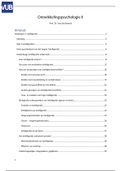Summary
Samenvatting Ontwikkelingspsychologie II 2019/2020
Dit is een samenvatting van het vak Ontwikkelingspsychologie 2 van academiejaar 19/20. Hopelijk helpt dit je vooruit om het examen voor te bereiden. Veel succes ermee!
Ik behaalde 12/20 voor dit vak. Door een gebrek aan tijd tijdens het open boek examen, kon ik de laatste vraag niet afwerken.
[Show more]
Preview 4 out of 83 pages
Summarized whole book?
No
Which chapters are summarized?
H8, h10, h12, h13
Uploaded on
June 20, 2020
Number of pages
83
Written in
2019/2020
Type
Summary
ontwikkelingspsychologie
psychologie
schakelprogramma
levenslooppsychologie
vub
Book Title: CU.Broek:ChildDev_p
Author(s): Unknown
Edition: Unknown ISBN: 9781784343033 Edition: Unknown
Institution
Vrije Universiteit Brussel (VUB)
Education
Psychologie
Course
Ontwikkelingspsychologie II
All documents for this subject (5)
$5.83
Also available in package deal from $11.57
100% satisfaction guarantee
Immediately available after payment
Both online and in PDF
No strings attached
Also available in package deal (1)
Ontwikkelingspsychologie 1 en 2
Ontwikkelingspsychologie II





